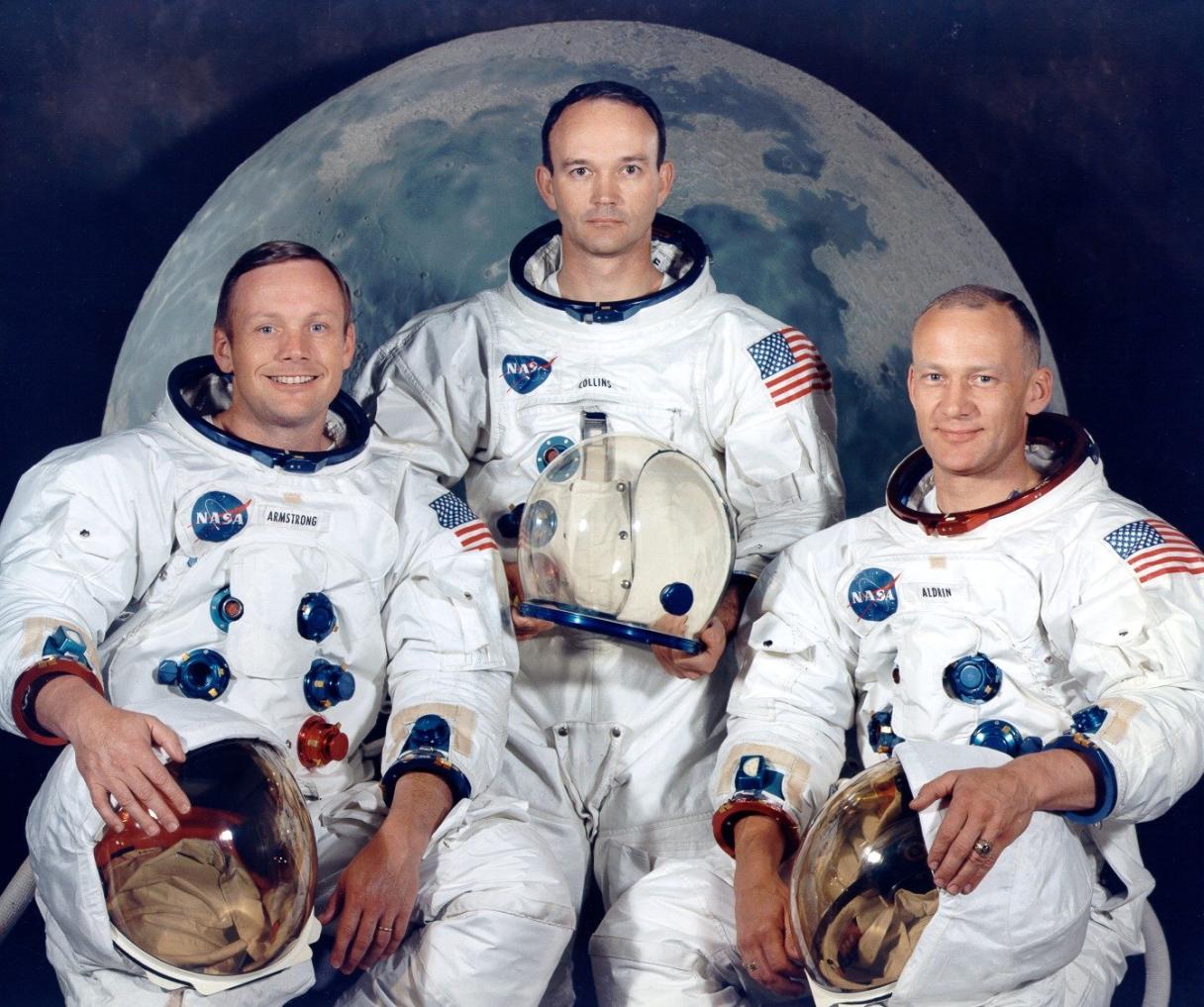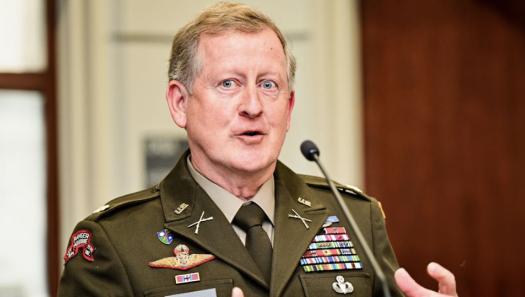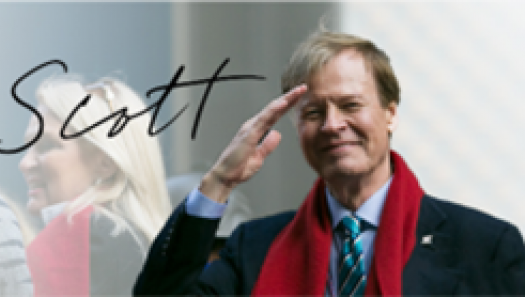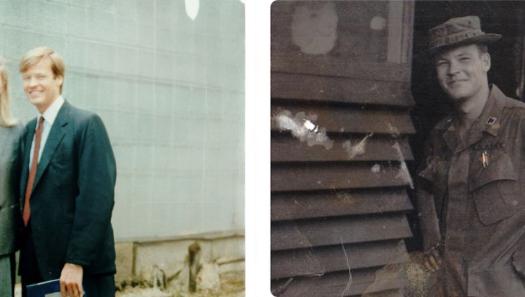Military & Veterans News
Veterans Advantage Celebrates the 30th Anniversary of Apollo 11
Roy Asfar

It was one of those few "you remember where you were when you found out" moments in American History, and yet it happened during a year chock-filled with historic moments. The United States held its first military draft lottery since World War II, the 60s generation was living its most-defining moments during a music concert in Woodstock, and two teams from New York City turned in improbable victories at the Super Bowl and World Series – but ultimately, July 20, 2009 belonged to three brave and heroic Veterans pioneering the surface of the moon.
This month marks the 40th anniversary of the famous lunar landing, Apollo 11’s epic race to the moon and back. Thanks to the vision of people in Washington, DC, Houston, and Florida, it’s best remembered by Commander Neil A. Armstrong’s proclamation "That’s one small step for a man. One giant leap for mankind."
The drama of the live television event, first heralded by onboard computer alarms that signaled there may not be enough fuel to complete the historic mission, catapulted Armstrong’s three-man crew to superstardom. It also gave the nation a jolt of much-needed national pride and filled young children across the country with visions of becoming heroes themselves.
All in the fraternity during NASA’s glory days were enchanted with flying. They were daredevils and scientists, and aviation pioneers. WWII pilots were their heroes, and the 10-year timetable set by John F. Kennedy became their life’s calling.
These days, the normally reclusive Armstrong remains largely out of the public spotlight but has always maintained a sense of professionalism about getting NASA’s objectives completed in his characteristic low key style.
In 2005, Armstrong said setting foot on the moon was "a wonderful feeling," especially because he believed there was only a 50% chance of a successful lunar landing.
"I was elated, ecstatic and extremely surprised that we were successful," Armstrong said. "We would have loved the opportunity to take some time to enjoy it, but we had the inevitable checklist and experiments that had to go on. So it was back to business, back to work as soon as we congratulated each other."
His comrade on the moon that day, Buzz Aldrin, remains in the public spotlight and continues to be an outspoken cheerleader for the US space program. He is an author, teamed with rap stars to raise money for his non-profit foundation, appeared on the Howard Stern radio show, and even speaks out on his own Twitter page.
He’s also encouraging the nation to aggressively pursue a landing on Mars, not for nationalistic pride, but to unite the world.
"I think our resources should... be on a pathway that can lead us to Mars," he told reporters last month. "We spoke to many people in different countries and they said, 'We did it'," said Aldrin, reflecting on the world reaction to the Apollo mission. "These quests to space are capable of unifying people to see the successes of the human race."
A fellow West Point graduate with Aldrin, Michael Collins served as command module pilot on Apollo 11. With the least glamorous role of the mission, since he did not set foot on the moon, Collins’ function was critical nevertheless.
He remained aboard the command module, Columbia, on station in lunar orbit while Armstrong, the spacecraft commander, and Aldrin, the lunar module pilot, descended to the lunar surface in their lunar module Eagle. Collins performed the final re-docking maneuvers following a successful lunar orbit rendezvous which was initiated by Armstrong and Aldrin from within the Eagle after their ascent from the lunar surface.
Because of the unprecedented logistics of being alone in the spacecraft as Armstrong and Aldrin walked the moon, Colins also held the status of mankind’s "most-lonely human since Adam."
BIOGRAPHICAL INFORMATION
Neil A. Armstrong
Armstrong was born on Aug. 5, 1930, on his grandparents' farm in Auglaize County, Ohio. He moved with his family to several Ohio communities before they settled in Wapakoneta when Neil was 13 years old. Armstrong developed an interest in flying at an early age. His love of airplanes grew when he went for his first plane ride in a Ford Tri-Motor, a "Tin Goose," at the age of 6. From then on, he was fascinated by aviation.
In 1947, Armstrong entered Purdue University. He began studies in aeronautical engineering. But in 1949, the United States Navy called him to active duty. Armstrong became a Navy pilot and was sent to Korea in 1950, near the start of the Korean War. In Korea, he flew 78 combat missions in Navy Panther jets.
Armstrong was more than just the first man on the moon. He was an extraordinary pilot. He's flown the X-15, the fastest plane in the world, at 4,000 mph, building a reputation as one of the era’s most distinguished pilots.
And his low-key demeanour prevailed throughout. He literally walked away from a deadly training crash, and immediately went back to work. And just as characteristically, he walked away from NASA just two years after the moon mission and drifted into the background as a teacher.
Buzz Aldrin
Edward Eugene "Buzz" Aldrin graduated from Montclair High School, Montclair, New Jersey; received a bachelor of science degree in 1951 from the United States Military Academy at West Point, New York, graduating third in his class; and a doctorate of science in Astronautics from Massachusetts Institute of Technology, Cambridge. His thesis was "Guidance for Manned Orbital Rendezvous." Aldrin has honorary degrees from six colleges and universities.
Prior to joining NASA, Aldrin flew 66 combat missions in F-86's while on duty in Korea. At Nellis Air Force Base, Nevada, he served as an aerial gunnery instructor. Following his assignment as aide to the dean of faculty at the Air Force Academy, Aldrin flew F-100's as a flight commander at Bitburg, Germany. He went on to receive a doctorate at MIT, and was then assigned to the Gemini Target Office of the Air Force Space Systems Division, Los Angeles. In March 1972, Aldrin retired from Air Force active duty, after 21 years of service. As a USAF jet fighter pilot during the Korean War, he shot down two MIG 15 aircraft.
Since retiring from NASA, the Air Force, and his position as commander of the USAF Test Pilot School at Edwards Air Force Base in 1972, he authored an autobiography, "Return to Earth". Aldrin has remained at the forefront of efforts to ensure a continued leading role for America in manned space exploration and a life-long commitment to venturing outward in space.
Michael Collins
Collins played a key role at NASA before the Apollo launch, as an astronaut in the earlier Gemini program. And like Aldrin, he chose an Air Force career following graduation from West Point. He served as an experimental flight test officer at the Air Force Flight Test Center, Edwards Air Force Base, California, and, in that capacity, tested performance and stability and control characteristics of Air Force aircraft--primarily jet fighters. He has logged approximately 5,000 hours flying time.
After retiring from NASA in 1970 he took a job in the Department of State as Assistant Secretary for Public Affairs. A year later he became the director of the National Air and Space Museum. He’s also written several books himself, reflecting on space flight, writings for adults and children.


